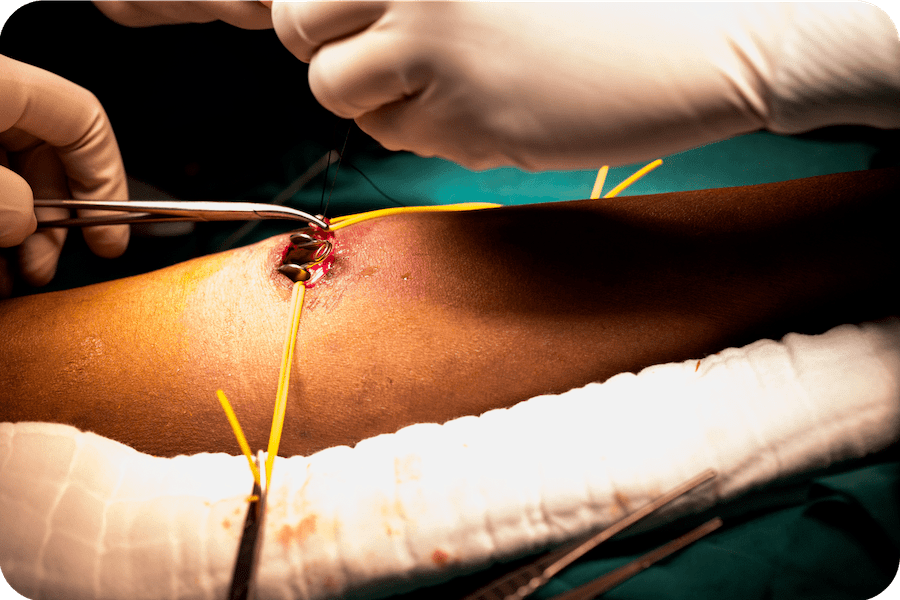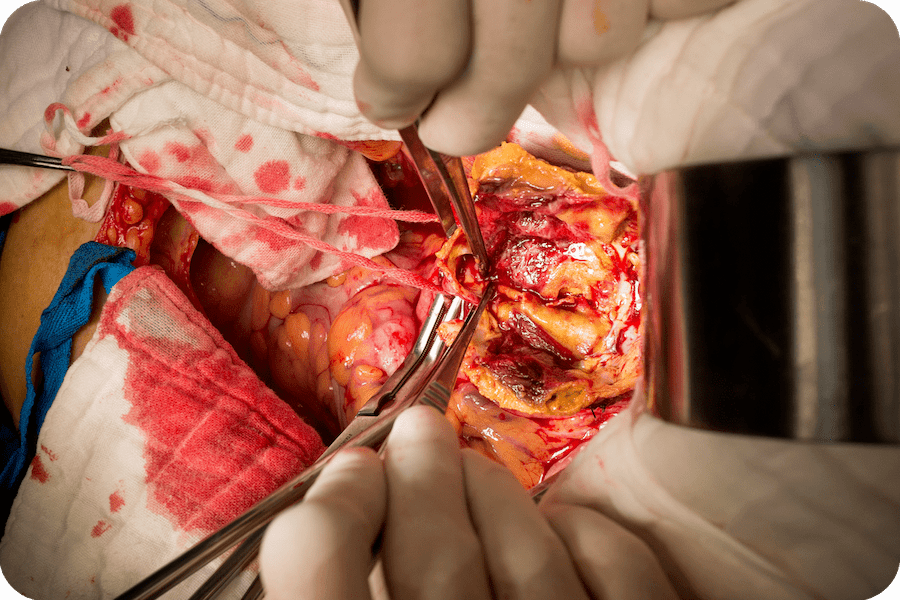Optimal dialysis access is the lifeline for dialysis patients. This crucial procedure filters waste and excess fluids from the bloodstream, an essential treatment for kidney dysfunction. The efficiency of this procedure relies on the accessibility and functionality of arteriovenous fistulas (AVFs) – surgically created connections between an artery and a vein designed to facilitate dialysis.
However, when complications arise with AVFs, such as the narrowing of blood vessels or the formation of blood clots, the integrity of the dialysis access may be compromised. In such instances, our vascular specialists may employ the angioplasty procedure to restore the critical blood flow required for effective dialysis.
When Is AVF Rescue Necessary
An arteriovenous fistula (AVF) rescue refers to medical interventions and procedures to manage issues with AVF. These techniques may include AVF angioplasty procedures, thrombectomy (clot removal), stent placement, or revision surgery to repair the connection.
Reasons why AVF may require rescue include.

Thrombosis or blood clots block blood flow through the fistula, leading to reduced or no blood flow. This causes pain, swelling, and potential damage to the surrounding tissues.

Arteriovenous Fistula Stenosis refers to the narrowing of the blood vessels that make up the AVF. This restricts blood flow, resulting in poor dialysis efficiency or clot formation. Rescue procedures like angioplasty or stent placement may be necessary to widen the narrowed blood vessels.

Infection may develop, causing redness, swelling, pain, and fever. Rescue may involve removing infected tissue, administering antibiotics, or even surgical repair of the AVF.

Aneurysm or swelling in the blood vessel walls. If an aneurysm develops in an AVF, it may rupture and cause significant bleeding.

Poor maturation means the AVF does not develop into a usable access point for dialysis due to inadequate blood flow or other factors. Rescue may involve surgical interventions to improve the maturation of the AVF or create a new access point.
In all these cases, rescue procedures are necessary to address the complications with the AVF, ensuring that it functions properly and provides adequate access to dialysis.
How Does the AVF Angioplasty Procedure Work
Rescuing a narrow AVF or stenosis involves an angioplasty procedure. This minimally invasive surgery widens the narrowed blood vessel and maintains proper blood flow. After angioplasty, the blood flow through the AVF should improve, restoring dialysis access.
Here are the steps involved in rescuing a narrow AVF.
Step 1 Diagnosis
Dr Tang and Dr Wong confirm the presence of stenosis in the AVF through imaging techniques like ultrasound, angiography, or venography.
Step 2 Preparation & Access
Preparation for the procedure involves local anaesthesia or conscious sedation. Afterwards,
Our vascular surgeons make a small incision near the AVF to gain access to the blood vessel.
Step 3 Guidewire and Baloon Catheter Insertion
Our specialists insert a guidewire into the narrowed blood vessel to navigate the vessel. Then, thread a catheter with a deflated balloon at its tip over the guidewire to position it within the restricted section of the AVF.
Step 4 Balloon Inflation and Deflation
Our doctors inflate the balloon to compress the plaque or stenotic tissue against the vessel walls and widen the blood vessels. After a few seconds, they deflate the balloon and remove it from the AVF.
Step 5 Assessment
Our professional specialists check the blood flow and the improvement in the diameter of the AVF using imaging technologies. If the stenosis is not fully resolved, the procedure may be repeated using different balloon sizes or other methods like stent placement.
Occasionally, they may use a small metal mesh tube called a stent to keep the vessel open after angioplasty. The stent is placed over the balloon and expanded at the site of the stenosis, providing additional support to keep the vessel open.
Step 6 Closure and Post-Procedure Instructions
Our vascular specialists close the incision and apply a sterile dressing using sutures or adhesive strips. They will monitor the patient to ensure no complications. Additionally, they will provide post-procedure and arteriovenous fistula care instructions to preserve dialysis access. This may include taking medications to prevent clotting or infection, avoiding strenuous activities, and regular follow-up appointments to monitor the AVF’s function and prevent further complications.
Our professional and committed vascular surgeons recognise the importance of dialysis access for patients undergoing treatment. As a result, they provide detailed consultation to determine AVF function and devise tailored treatment plans to restore blood flow if a patient’s AVF needs rescue.
5 Advantages of Early AVF Rescue for Optimal Dialysis
- Ensures uninterrupted access to effective dialysis, providing access points for the removal and return of blood.
- Optimise treatment efficiency. Early AVF rescue prevents prolonged dialysis sessions or inadequate waste removal due to complications.
- Minimise patient discomfort and avoid complications, such as swelling, bruising, or infections at the access site.
- Low healthcare costs. Patients prevent complex medical interventions, including the need for additional procedures or prolonged hospital stays, when a vascular specialist addresses AVF complications early.
- Enhance patient well-being. Timely AVF rescue ensures patients receive consistent and effective dialysis treatment.
Compassionate & Dedicated Dialysis Access Care At The Vascular and Endovascular Clinic

Our dedicated vascular specialists, Dr Tang and Dr Wong, understand the critical role that optimal dialysis access plays in individuals battling kidney dysfunction. As a result, they provide early AVF rescue interventions, including angioplasty procedures, to ensure continuous dialysis access and improve treatment efficiency.
With evidence-based techniques and compassionate, patient-centred approaches, we address complications promptly, minimise discomfort and enhance the overall well-being of our patients.
Our commitment is to your health and comfort.









